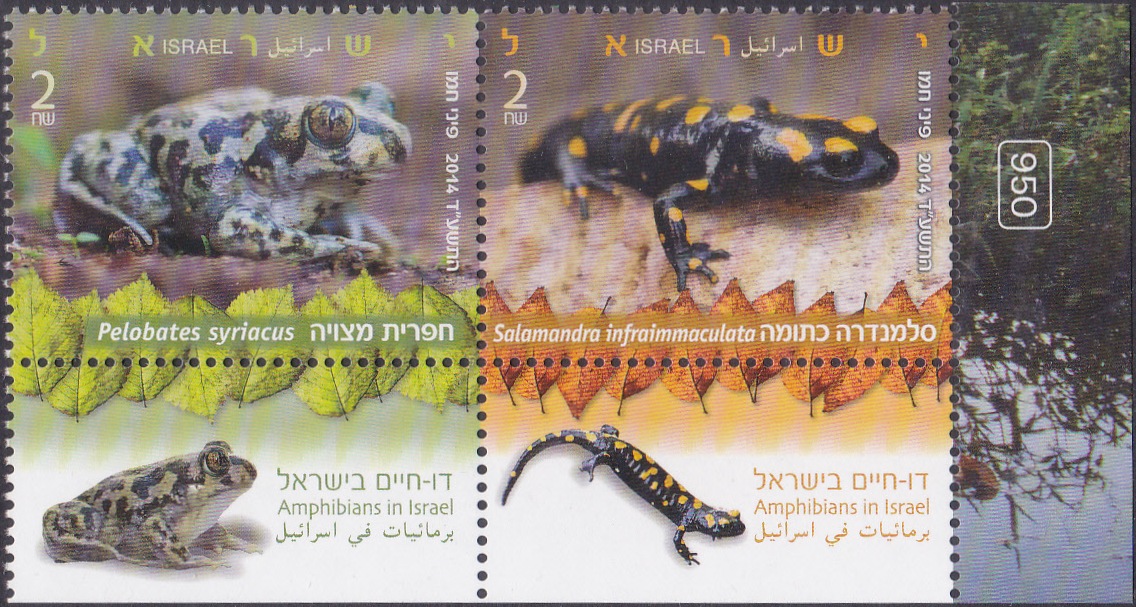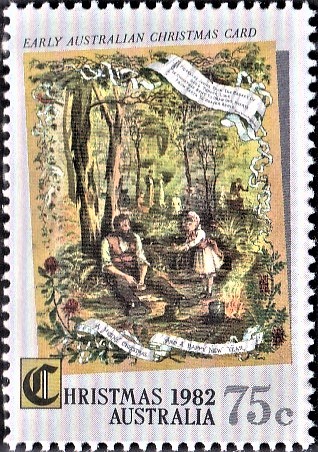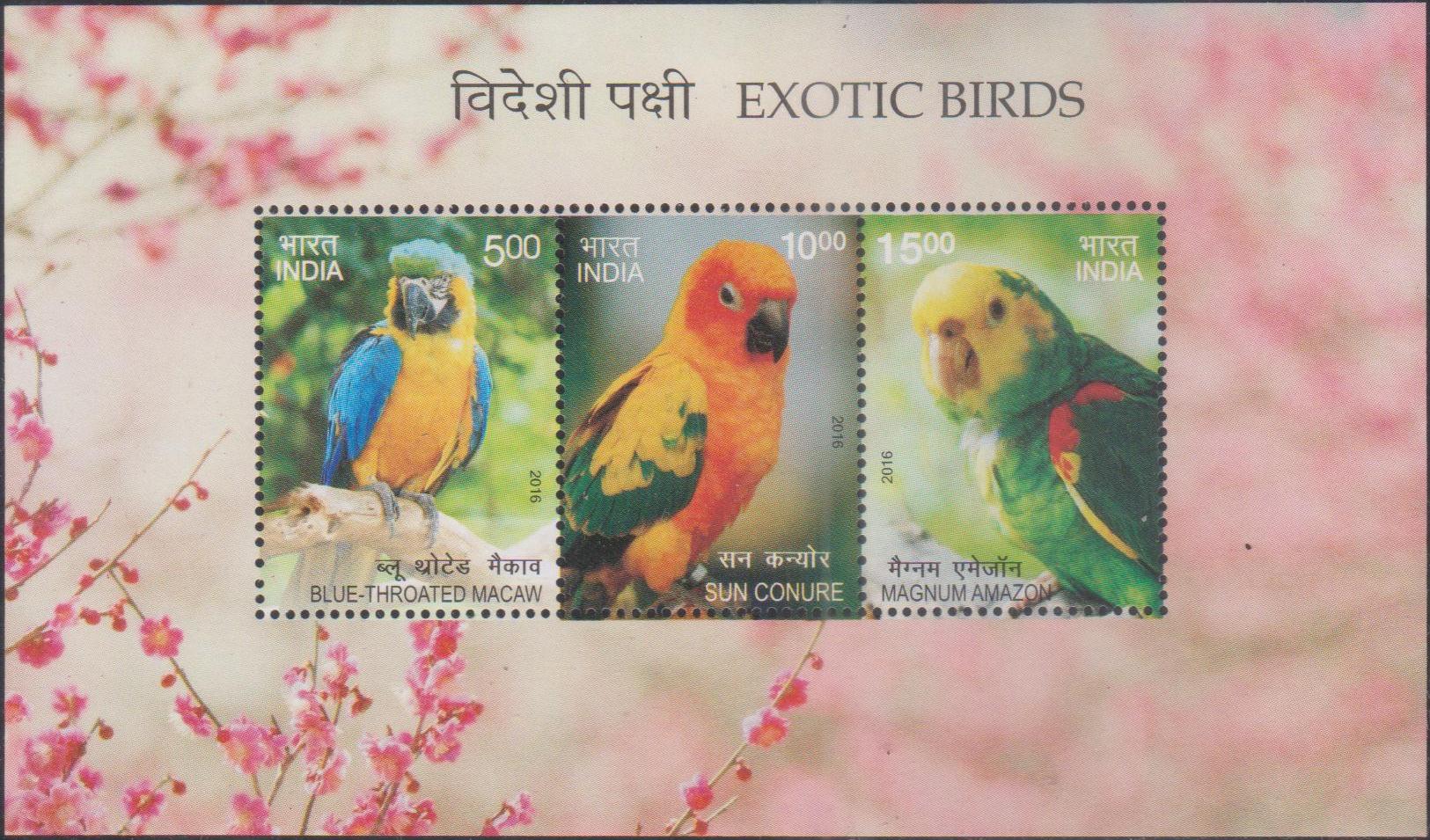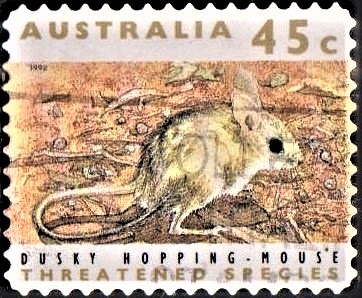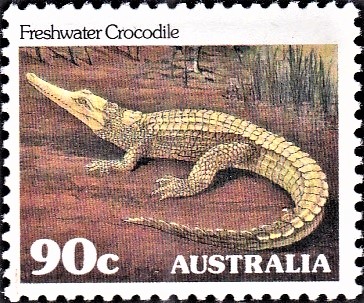
Australian Animals – Series II
Complete Set of 7 nos of definitive postage stamps on the Reptiles & Amphibians : Australian animals definitive stamp series, part 2 :
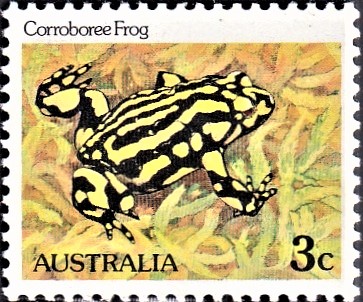
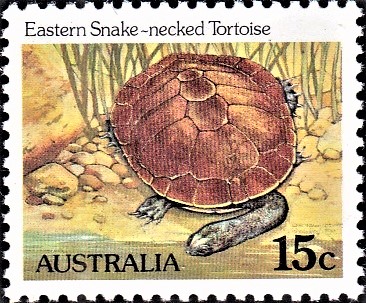
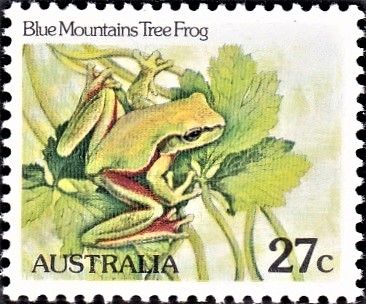
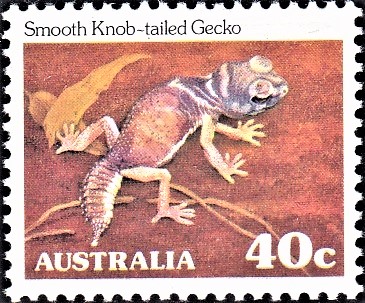
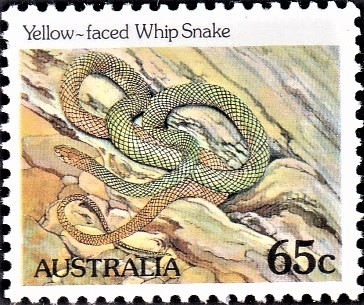
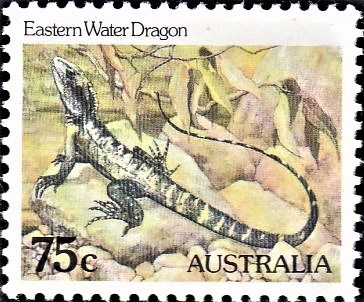

Issued by Australia
Issued on Apr 19, 1982 (3c, 27c, 65c, 75c) and Jun 16, 1982 (15c, 40c, 90c)
Issued for : Reptiles and amphibians are the subject of the second part of the Australian animals definitive stamp series. The six mammals featured on the first part of the series introduced in 1981 are all considered to be endangered species. Reptiles and amphibians form another important group of Australian fauna. The seven species depicted on the stamps were selected on the advice of the Department of Herpetology at the Australian Museum, Sydney. The Blue Mountains Tree Frog and the Corroboree Frog are amphibians; and the Yellow-faced Whip Snake, the Eastern Water Dragon, the Eastern Snake-necked Tortoise, the Smooth Knob-tailed Gecko and the Freshwater Crocodile are reptiles. Collectively these seven species are spread over most of mainland Australia. None of them is endangered, but all, either because of their habits or their distribution, are comparatively rarely seen.
Designed by : Beverley Bruen, Uralla, NSW [Miss Beverley Bruen graduated with Diploma of Painting from the National Arts School, Sydney in 1966 and later, in 1977, returned to studies to complete a Bachelor of Arts degree majoring in Fine Arts at Sydney University. Originally interested in the illustration of children’s literature, she has, through a “twist of circumstances”, found herself becoming known as a herpetological artist. As well as the reptile and amphibian designs for Australia Post, she has been commissioned by NSW National Parks and Wildlife Service to design an identification poster of Australia‘s venomous snakes. When not involved with work as a free-lance illustrator, Beverley Bruen has exhibited paintings and taught life-drawing to art and architecture students at Sydney University Art Workshop, Hong Kong University and the National Art School, Sydney.]
Typographer : Ron Fletcher, Melbourne
Type : Stamps, Mint Condition
Colour : Multi Colour
Denomination : 3, 15, 27, 40, 65, 75 & 90 Cents
Stamp sizes : 30 mm x 25 mm
Perforations : 12¾ x 12¾
Paper : APWH stamp paper
Printing process : photolithography on a four–colour Roland Rekord press
Printer : Leigh–Mardon Pty Limited, Melbourne
About :
- Herpetofauna, the collective name for reptiles and amphibians, are vertebrate, cold-blooded animals. During the winter months in the colder areas of Australia, most reptiles and amphibians become dormant remaining torpid until the temperature slowly begins to rise again during the spring. An important difference exists in the reproductive cycle of amphibians and reptiles. Amphibians typically lay unshelled, jelly-like eggs in water, from which hatch aquatic tadpoles that undergo a metamorphosis to become air-breathing adults. Reptiles typically lay shelled eggs on land, and the newly-hatched young are essentially replicas of their parents, although some reptiles produce live young.
- Tree frogs are so named because of the development of large finger and toe pads, enabling them to climb trees. Litoria citropa, the Blue Mountains Tree Frog, grows to an average length of 65mm. Its broad, almost triangular head has prominent bulges around each eye. Usually found in rocky areas near water, the Blue Mountains Tree Frog has been observed in high trees during the cooler months. The distribution of this species is confined to the coast and ranges of New South Wales and eastern Victoria, especially the Blue Mountains area of New South Wales.
- Pseudophryne corroboree, the Corrobee Frog, is the most distinctive and easily recognised Australian frog. Its bright yellow or greenish-yellow colouring and shiny, irregular black stripes are reminiscent of the decorative patterns Aborigines apply to their bodies for ceremonial dances. The Corroboree Frog is found throughout the Australian alpine regions around Mt. Kosciusko and the high country near the Australian Capital Territory. Often found under logs or in vegetation close to trees and marshes, the frog moves into alpine sphagnum bogs for the breeding season.
- Until recently the Eastern and Western Yellow-faced Whip Snakes were regarded as geographic variants of the same species, Demansia psammophis. The Western Yellow-faced Whip Snake, the reptile depicted on the stamp, is now regarded as a separate species named Demansia reticulata, known in Western Australia as the Green Whip Snake. Both the common and Latin names of Demansia reticulata derive from the snake’s distinctive coloration. The back and sides of the body are pale green. Each scale is edged with black, resulting in the netted or reticulated pattern which gives the species its scientific name. Swift moving and active by day, the Yellow-faced or Green Whip Snake inhabits much of Western Australia and adjacent parts of the Northern Territory and South Australia. Its bite is venomous and painful, but not lethal.
- Physignathus lesueurii, the Eastern Water Dragon, is a semi-aquatic tree lizard which lives near creeks and rivers. Often observed on the bough of a tree overhanging water, the lizard, if disturbed, will drop into the water and remain submerged for up to half an hour. One of the larger species of dragon, the Eastern Water Dragon attains an average length of one metre. The species is found in eastern coastal areas from Cape York to eastern Victoria.
- The names ‘turtle’ and ‘tortoise’ are applied in different ways in various parts of the world. In Australia, ‘tortoise’ refers to freshwater creatures, and ‘turtles’ are marine animals. The shell of Chelodina longicollis, the Eastern Snake-necked Tortoise, is approximately 25cm long and covered by horny plates. The colour of the shell varies from yellow to brown or black. Each plate is edged in black, giving lighter-coloured specimens of this species a distinctly patterned shell. The Eastern Snake-necked Tortoise is semi-aquatic, distinguished by jointed fore and hind limbs and webbed feet. Distributed throughout the interior of south-eastern Australia, the tortoise inhabits swamps, lakes, billabongs, and slow-moving rivers.
- Australian geckos tend to be non-venomous and nocturnal. Nephrurus levis, the Smooth Knob-tailed Gecko, is one of the larger species, measuring approximately 12cm. Its head and eye are proportionately large, and its ridged tail is carrot-shaped with a small knob on the end. Predominantly purplish-brown with yellowish-white dots, the gecko’s body is soft thin-skinned, and delicate in appearance. The Smooth Knob-tailed Gecko is a burrow-dweller by day, inhabiting all arid areas of mainland Australia except Victoria.
- Two species of crocodile are found in Australia: Crocodylus johnstoni, the Freshwater Crocodile, and Crocodylus porosus, the Estuarine or Salt-water Crocodile. The average length of the Freshwater Crocodile is 2 metres, considerably smaller than the Estuarine species. Its body is heavy and muscular and its limbs are short and thickset. The numerous sharp teeth are used to hold prey underwater until drowned; victims (fish, frogs, crustaceans, birds, mammals and reptiles) are then devoured whole or in large sections. Freshwater Crocodiles are found only in northern Australia, in coastal and hinterland freshwater streams, lagoons and billabongs.


